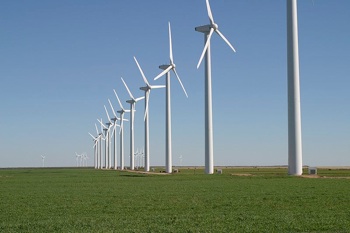
Economic Themes for the 2020s: 20/20 Vision May Not Be Perfect
Since 2020 marks the beginning of a new decade, we focus on themes we expect to play out over the next ten years.
- Emerging Markets continue to take over the world. Population growth and younger demographics in emerging markets will continue to drive growth through the 20s, as the population in developed market economies continues to age. We expect emerging & developing market GDP growth to stay above 3% for the decade.
- Autonomous Vehicles in our neighborhoods. A confluence of various technologies has made it possible for drones and self-driving cars to pilot themselves. The coming decade will see millions of autonomous vehicles take to our roads and skies. Our vision of the robotic future has been heavily influenced by sci-fi representations of humanoid robots. The reality is that the robots of our future are more likely to be a pizza delivery drone.
- Genetic testing becomes commonplace. The cost of genetic testing has fallen dramatically over the past few years. By the end of the decade, we expect genetic testing and sequencing to be commonplace and most healthcare facilities in the developed world to offer full-genome sequencing to all patients. This powerful technology raises enormous ethical and moral questions which will make the road bumpy, but won’t materially slow the growth.
- Blurring the line between reality and games. We expect the 2020s to be the decade where augmented reality, virtual reality and the line between games and real life will become blurred. These advanced functions will require ever more powerful graphics processing units (GPUs). We expect software and hardware companies in this space to grow especially as their products become more affordable to a wealthier, growing population in emerging markets.
- Business opts for computing as a service. The biggest change in commercial computing over the past decade has been the rise of central, shared datacenters operated by the largest tech companies. We expect this trend to accelerate over the coming decade, with self-managed datacenters becoming increasingly rare.
- Climate Change is here. The 2020s are shaping up to be the decade where climate change begins to impact large swaths of the population. We’ve already seen an increase in the incidence of extreme climate events (such as the enormous wildfires in Australia), a trend that has not gone unnoticed by the insurance industry. Over the course of this decade, we expect this conclusion to become almost universally accepted in the US. This will have an impact on the fortunes of the energy industry and many others. A number of our other long-term trends will focus on aspects of climate change.
- Water, water everywhere / Nor any drop to drink. As rainfall patterns change and we experience hotter and drier weather for longer, obtaining potable water will become harder for much of the world’s population. We expect the market share of water-related technology and infrastructure companies to grow as communities across the world work to use fresh-water resources more efficiently by recycling, desalination and gains in efficiency.
- Renewable Energy as the sole growth area. By 2030, we expect conventional power sources to begin sunsetting. Renewable power sources will account for over 150% of net new power capacity as conventional power generation facilities are mothballed (renewable capacity was 75% of net new power capacity growth in 2018).
- A plant and lab future. We expect plant-based and lab-grown meat substitutes to displace significant amounts of meat consumption in the US and Europe by 2030. This will result in lower meat consumption across the developed world and slower growth in global meat consumption.
- Tech enters banking in force. As the technology sector matures and ever larger companies look for areas of growth, we expect focus to shift to commercial and retail banking services. This is an industry already seeing significant disruption from advances in technology. Major technology companies have begun to dip into the waters with credit card and peer to peer payment offerings. By 2030, we expect over 15% of payment/banking services by value to be provided by companies that were not banks in 2020.

 Dear Friends,
Dear Friends,